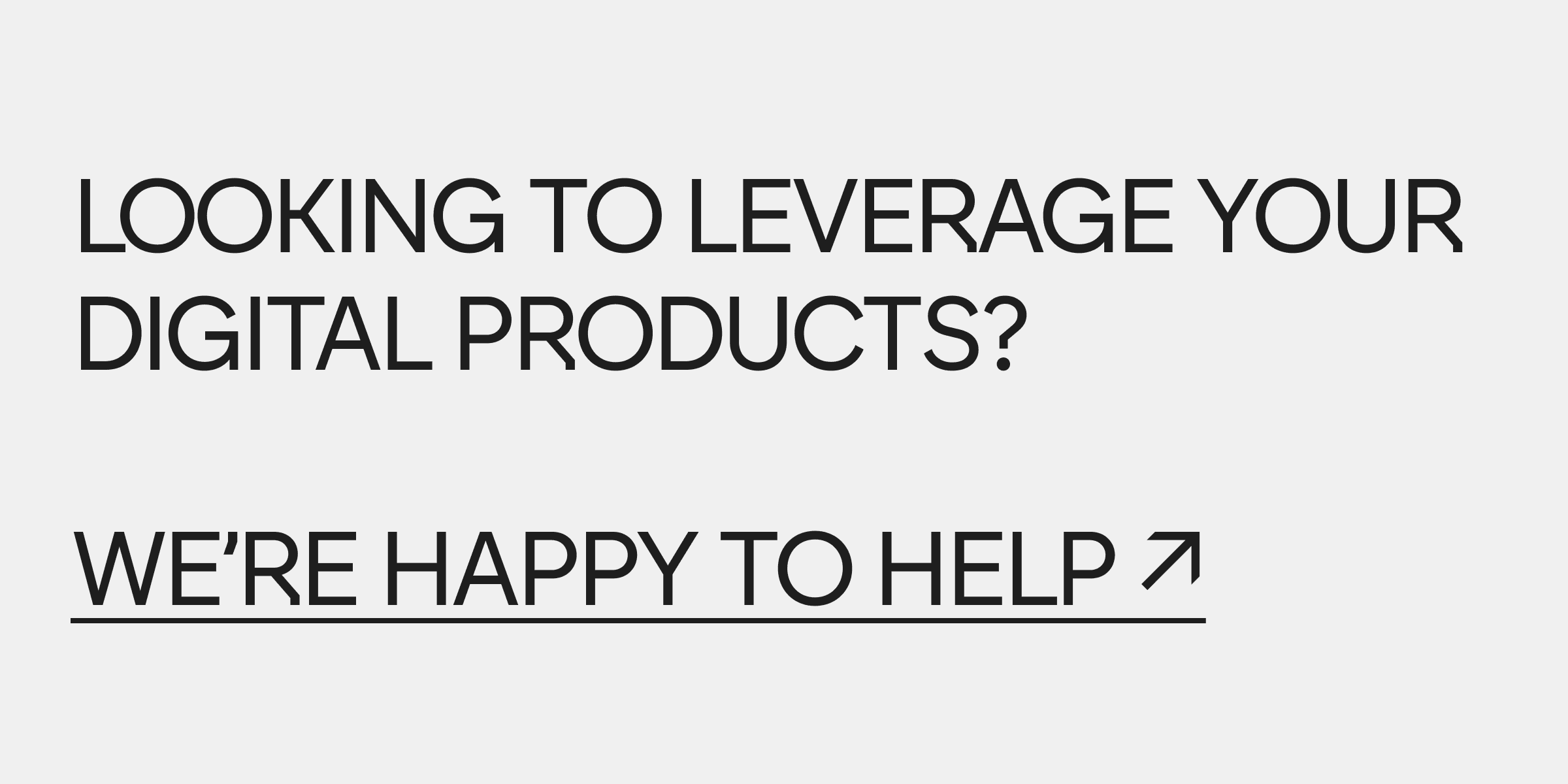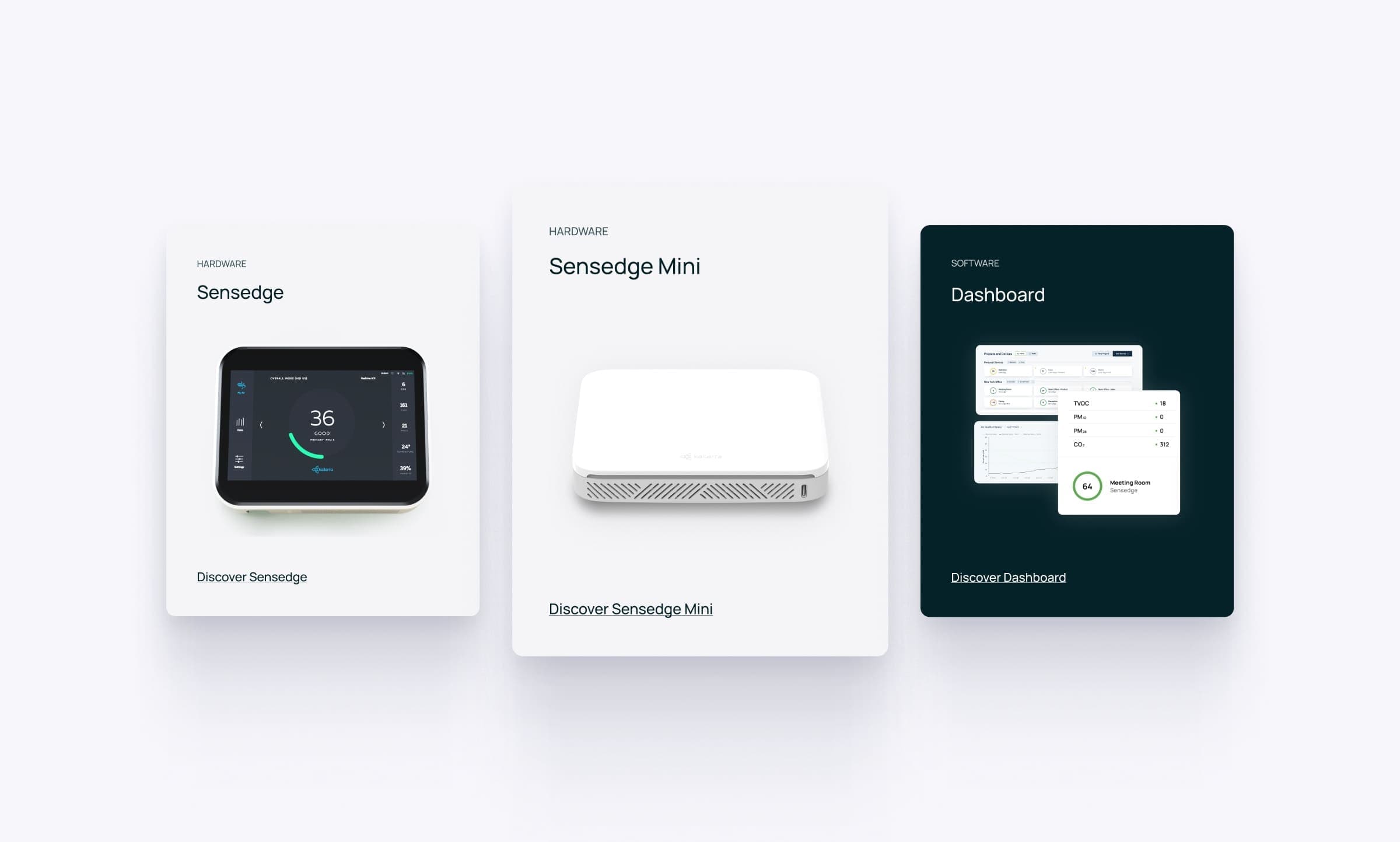Every visual element of your website redesign can help communicate your brand’s values and core messaging. At Adchitects, we understand that design is much more than just making something look pretty. It’s about giving your audience a clear idea of who you are, which is what a strong brand aesthetic refers to. Understanding why a brand exists is a foundational element in creating a strong brand identity, as it shapes the mission, values, and goals that inform the visual elements of its branding.
During our discovery workshops with clients, we determine what values should be reflected in the final project. These could be modernity, friendliness, or trustworthiness. Then, we decide which values the client categorically doesn’t want to be associated with. These could be elitism or dishonesty.
Values chosen during the workshops can be expressed through the medium of various visual elements. Together, they make it possible to create a cohesive and memorable brand image. Read on to learn more and discover the role of values in good design.
Brand Identity and Visual Identity
A brand’s aesthetic is the base of its identity, reflecting the values, mission, and personality. It’s what makes a brand unique and memorable. A strong brand identity is key to making an impact on clients and target audience. It’s reflected in every visual element, tone, and piece of messaging a brand puts out into the world.
Understanding a brand’s identity is key to a consistent and effective brand aesthetic. It means every design decision from the colour palette to the typography aligns with the brand’s core values and mission. An authentic and unique brand identity sets a brand apart from the competition, making it recognisable and memorable. At Adchitects we get to know our clients’ brand identities so our designs resonate with their audience.
Definition of Brand Identity
A brand identity is the visual representation of a brand’s personality, values, and mission. It encompasses various elements such as colors, typography, illustrations, images, icons, and more. A well-crafted brand identity is essential for creating a consistent brand image across all touchpoints and for establishing a strong connection with the target audience. By aligning these visual elements with the brand’s core values, businesses can create a memorable and impactful presence that resonates with their audience. At Adchitects, we meticulously design each component of a brand’s identity to ensure it reflects the brand’s essence and appeals to its target market.
Identifying Target Audience and Competitors
Identifying the target audience and competitors is crucial for creating a brand aesthetic that resonates with the target market. By analyzing the target audience’s interests, preferences, and values, brands can identify visuals that will grab their attention and foster a deeper connection. Additionally, researching competitors helps pinpoint areas where the brand can differentiate itself, creating a unique visual identity that stands out in the market. At Adchitects, we conduct thorough market research to understand the competitive landscape and the target audience, ensuring that our designs are both distinctive and appealing.
Analyzing the target audience involves understanding their demographics, interests, and behaviors. This information can be gathered through surveys, interviews, or data sources like Google Analytics or social media channels. By gaining insights into what drives and motivates the target audience, brands can create visuals that appeal directly to their customers while setting the brand apart from the competition. At Adchitects, we leverage data-driven insights to tailor our designs to the specific needs and preferences of the target audience, ensuring maximum engagement and impact.
The Role of Typography in Graphic Design
Typography has the power to help express and communicate ideas through its shape, size, and typeface. Each typeface has a personality and a message associated with it. To give an example, serif and sans-serif fonts evoke different emotions. The former have traditional rounded letters that can communicate prestige, elegance, or timelessness. On the other hand, sans serif typefaces have a modern sharpness to them that suggests progressiveness and innovation.
Understanding typography and using it to your advantage is essential to any successful design, as it significantly contributes to a brand’s visual identity. Incorporating playful and engaging design elements is crucial in creating visually appealing brand aesthetics. Here’s how it works in practice. Our client wanted to stand out from the crowd. They realized that their visual identity was too similar to that of a direct competitor. By switching up their typography, we made them appear modern, trustworthy, and innovative without making their visual identity overly complicated and overwhelming.

The Meaning of Colors
Colors can evoke strong emotions. Choosing the right color palettes is deciding for establishing a brand identity that resonates with the target audience. As a result, they can have a huge influence on the perception of a brand. For instance, the use of warm colors can make a brand seem friendly and approachable. Cold colors, such as blue, evoke feelings of stability or are associated with technology. The minimalist aesthetic, as a design philosophy, emphasizes simplicity and cleanliness by using limited color palettes and uncluttered compositions to create a sleek and functional visual identity.
The contrast between different color schemes can also be used to create an electrifying design that will grab people’s attention and leave a lasting impression. For that reason, the selection of the right color should not result from the current graphic trends. Instead, it should be a carefully thought-out design choice made with the client’s target audience in mind.
Our client Seasn wanted to express a variety of values to appeal to a wider audience. We presented them with a simple, yet multi-colored logo. Each color represented a specific value. Orange helped create a more welcoming environment, while violet symbolized wisdom. These two colors were chosen for a reason. The brand’s main target group was mature women looking to achieve financial independence, who were likely to find these colors and what they represented appealing.
Design Styles and Trends
Design styles and trends can significantly influence a brand’s aesthetic and help create a unique visual identity. Understanding different design styles, such as minimalist, modern, or vintage, allows brands to craft a consistent brand image across all touchpoints. Staying up-to-date with the latest design trends ensures that a brand remains relevant and fresh in the eyes of its audience. At Adchitects, we blend timeless design principles with contemporary trends to create visually compelling and enduring brand aesthetics that resonate with the target audience.
Consistency and Coherence
Consistency and coherence are key to creating a strong brand aesthetic. Maintaining a clean and consistent aesthetic across all touchpoints is crucial for building trust and reliability with the audience. A consistent brand aesthetic can significantly increase customer loyalty and retention, as it provides a familiar and dependable experience.
Moreover, consistency and coherence enhance brand recognition and awareness. When customers repeatedly see the same visual elements and messaging, they are more likely to remember and recognize the brand. This helps establish the brand’s reputation and credibility in the market. A consistent brand aesthetic also simplifies the decision-making process for customers, making it easier for them to choose which brand to align with. At Adchitects, we ensure that our designs are coherent and consistent, reinforcing the brand’s identity and values.

Why is Visual Content Important?
Bill Gates once said, “Content is king.” Content is a major success factor for any brand or business. In today's market, the role of aesthetics in business branding is crucial, as potential customers have evolved expectations regarding design. All marketing materials should consistently reflect the brand’s visual identity to ensure cohesive messaging across platforms. Currently, anyone can take photos with a phone, which is why the right artistic direction and content selection determine the success of a brand or cause its downfall. This choice depends largely on what your target audience is like, as different audiences react differently to different types of content. Knowing your target audience and choosing the kind of content that’s going to resonate with them can help you gain loads of loyal customers that will keep on buying from you for many years to come.
While redesigning the new website for Kaiterra, we simplified its dashboard screens and put an emphasis on their minimalist products. While doing so, we prioritized the reliability and indispensability of Kaiterra solutions.

Pictured is the responsive website for Kaiterra, created by Adchitects.
Brand Recognition
Brand recognition is the ability for customers to see and remember a brand through its visual and messaging components. A strong brand aesthetic is key to increasing brand recognition and awareness. When a brand’s visual identity is unique and consistent, it’s easier for customers to recall and recognise it. A modern aesthetic, characterized by simplicity, sophistication, and clean lines, plays a crucial role in conveying innovation and progression, especially in sectors like technology, finance, and architecture.
Brand recognition is key to customer loyalty and retention. A recognisable brand aesthetic sets a brand apart from its competitors, in a crowded market. Consistent branding reinforces this recognition, so customers can see the brand across all platforms and touchpoints. At Adchitects we create strong brand aesthetics which increase brand recognition and build long term relationships with your customers.
Using Visual Storytelling to Convey Brand Message
Visual storytelling is a powerful way to convey a brand’s message and aesthetic. It involves using visual content to tell a story that resonates with the audience and communicates the brand’s values and mission. A brand’s visual content should be consistent with its overall aesthetic, ensuring that every image, video, and graphic aligns with the brand’s identity.
Visual storytelling can create an emotional connection with clients and the target audience, making the brand more relatable and memorable. It also helps differentiate the brand from its competitors by showcasing its unique style and personality. Consistent visual storytelling can increase customer engagement and loyalty, as it provides a cohesive and compelling narrative that draws the audience in. At Adchitects, we leverage visual storytelling to create engaging and impactful designs that convey our clients’ brand messages effectively. Additionally, a clean and simple web design is crucial in enhancing user experience and engagement, making it an essential aspect of a brand's online presence.

Developing a social media aesthetic involves creating a consistent visual identity across all social media platforms. This includes choosing a cohesive color palette, font style, and visual elements that reflect the brand’s values and mission. A well-designed social media aesthetic can help create a strong brand image and establish a connection with the target audience. By maintaining a consistent look and feel across social media channels, brands can enhance their recognition and build a loyal following. At Adchitects, we specialize in crafting social media aesthetics that align with our clients’ brand identities and captivate their audiences.
Profile Aesthetics
Profile aesthetics refer to the visual style and presentation of a user’s profile on social media platforms. A well-crafted profile aesthetic can help users establish a consistent visual identity across different platforms. Profile aesthetics can be used to convey a user’s personality, interests, and values. A strong profile aesthetic can help users stand out and attract like-minded individuals. At Adchitects, we understand the importance of a cohesive and appealing profile aesthetic, and we work with our clients to create profiles that reflect their unique identities and resonate with their target audience.
Don't Forget About Animations
The last element of the brand that is often overlooked is motion. In the current era of smartphones and digital communication, it is necessary to grab the user’s attention using movement. The key here is to determine what kind of movement suits a given brand and reflects the brand's values. If the customer expects legibility from the brand, they will prefer small micro-interactions. On the other hand, if the brand is about being loud and energetic, the customer is likely to prefer dynamic movement.
As we redesigned an e-commerce store for UGallery, we focused on their customers. Their target audience consists of mature people that appreciate functionality over aesthetics. We also wanted to address the brand's main values, including approachability, helpfulness and friendliness. For that reason, we focused on designing subtle micro-interactions. Creating a more dynamic layout would have a negative impact on the development of Ugallery's new branding and probably cause them to lose older customers.
Summary
Designing visuals for clients is not just about making something that looks nice. Sure, it should look nice, but the key here is to use the brand's aesthetic to communicate specific values and ideas. With that in mind, we ask our clients about which values are important for their brand. Then, we do our best to make their website or mobile application reflect these values.
In case you don't know how to make your online presence convey specific values, get in touch with us! Our world-class design experts are going to do their best to ensure that your branding and digital products align with what you believe in.







